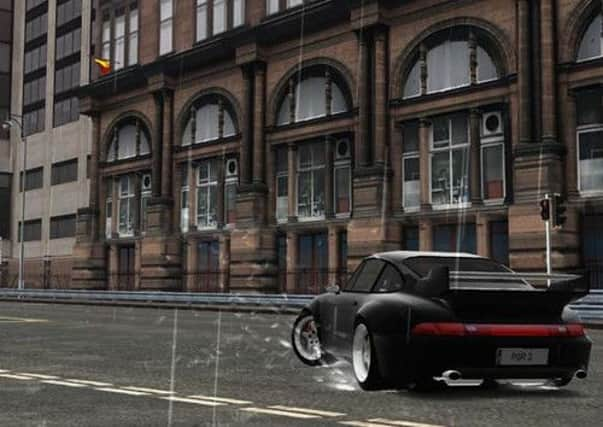Richard Laing: Visualising our towns helps us see them better


Much of my work in the past few years has looked at developing ways to encourage discussion and debate about our town centres. This has touched on subjects such as how we travel, urban tourism and building conservation, and has sometimes used innovative ways to record or present “scenes” or environments.
A good example is the use of laser scanning, which sometimes helps to provide a “fresh view” of the familiar, providing a 3D computer model of a building or street, which can be viewed from any angle. This has been true at the small scale of ancient artefacts, such as archaeological finds near my home town of Elgin, and at the large scale of World Heritage sites (and notably through the work of Historic Environment Scotland and the Scottish Ten project). The laser scanning work we have been doing in Elgin has certainly caused me to notice buildings and details of the town which I failed to notice in my early years. Our work in Aberdeen has challenged us to recognise the complex layout of a town built in phases since medieval times.
Advertisement
Hide AdAdvertisement
Hide AdIn my own experience, visual approaches to presenting architecture can arguably help people to discuss architecture, and to look at what may be very familiar buildings from an original perspective.
However, regardless of how excited I and others might become at the prospect of a new piece of “virtual” technology, some of the most informative and productive discussions have often emerged where people are encouraged to use a whole range of visualisation techniques.
These could include “cutting edge” technologies such as pencils, sticky notes and speaking to each other – in other words, where digital methods of visualisation are just seen as another tool in the box. In much the same way that it would seem strange to claim that a fork is “bette” than a knife, maybe we need to embrace digital technology as being something which can co-exist with methods we have been using for centuries.
I come from a generation where I can still remember the first person at school to get a home computer. I remember being the first person in my university department to send e-mail. To anybody under the age of 20, such statements must seem ridiculous, as virtual reality and digital communication are a fact of life.
The growth in popularity of hyper-realistic computer games such as the Grand Theft Auto or Assassins Creed series has meant that whole generations are no longer likely to be blindly impressed by seeing a digital “version” of architecture, and might in fact be more inclined to take a critical view of any flaws in a model. This is partly due to the growing popularity of digital modelling in itself as a game, the most obvious example being the popularity of Minecraft, which has users of all ages. In my own city of Aberdeen, as in other parts of Scotland, the popularity of community-led hackathons (such as “Code the City”) has seen the development of computer models which try to show social and industrial change over time. We can think about how this begins to bridge a communication gap between designers, clients and the public, as well as encouraging people to look at their own towns with fresh eyes.
A key challenge within the architectural disciplines in the coming years will be to find ways to encourage everyone to embrace such technology, whilst ensuring that there is a clear intention behind its use to communicate ideas. If we want to use visualisation to encourage debate, then this requires consideration of “what is the purpose of a debate”, “who should be involved” and “how can this best take place?” In turn, the approaches taken when trying to “sell” an idea, or gain planning consent, may also be entirely different.
Nevertheless, I would argue that where people use thought, care and attention, digital tools can support a much deeper and more informed involvement of society in discussions about architecture.
• Richard Laing is professor at the Scott Sutherland School of Architecture and the Build Environment at Robert Gordon University